If you’ve never built a sales funnel before, or your current funnel isn’t generating enough sales, what you’re about to learn will change your fortunes forever. You’ll discover how to build a powerful sales funnel that grows your revenue.
A sales funnel is the journey your website visitors go through on their way to buying your product or service. The journey consists of different stages.
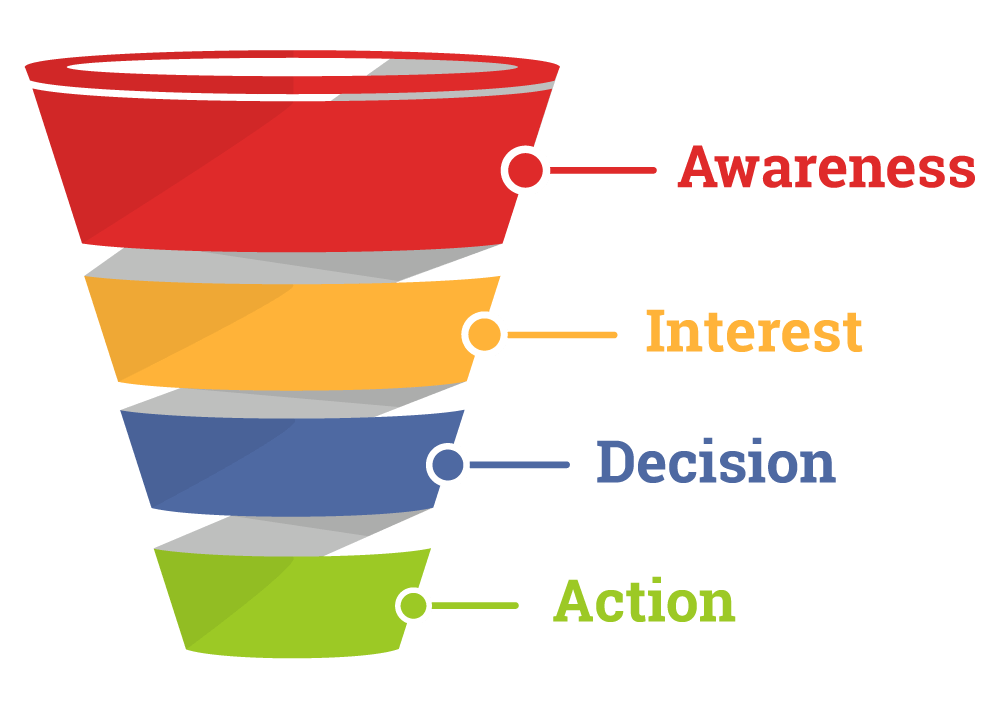
Here are the four main stages:
- Awareness: This is when a web user becomes aware of your product, service, or business.
- Interest: This is when a web user expresses an interest in what you sell.
- Desire: This is when a web user knows your product or service is what they need.
- Action: This is when a web user buys your product or service, becoming a customer.
So, how do you build a sales funnel that turns lots of random web users into loyal customers?
Consistency is the key
Awareness is the first stage of the sales funnel. It’s the moment customers learn about your business, product, and service.
For example, if you run a digital marketing agency, this is when prospects know your company. They know what you do.
Maybe you only offer PPC or SEO services. Or, perhaps you do web development. This is when they realize all that.
Get a lot of people into this first stage daily, weekly, or monthly.
If you got 1,000 people to be aware of your business last month, make sure you maintain that number this month. Or do even better.
For example, Hector Quintanilla is an active Quora user. He answers many questions and engages with other users on the platform. His answers received over 2 million views on Quora in the last 30 days alone.
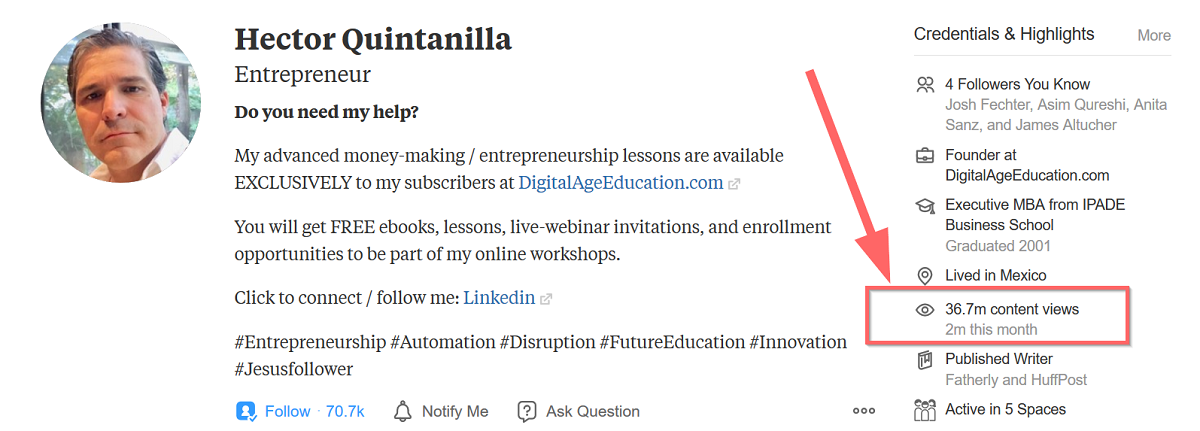
Quintanilla uses Quora to drive traffic to his website, where he sells entrepreneurship courses.
Hector answers a lot of questions every week. And he has been consistent with that for some time.
Let’s assume that you do cold emailing as a way of creating awareness for your business. You sent 1,000 cold emails last month. Then you decided to send 100 cold emails this month. Your sales funnel would lack consistency.
You need consistent effort if you’re serious about building a sales funnel that work.
A sales funnel can never be perfect when it’s first built. It’s through consistent effort and input that will enable you to fine-tune the funnel and make it work harder for your business.
Prospects must continue to be aware of your business. Most of them won’t be ready to move on to the next stage of your sales funnel until they had seen your business repeatedly.
Use content marketing to compete on various awareness platforms
There are several marketing platforms available today. Below are some of my favorites:
- Google organic search
- Medium
- Quora
- YouTube
You can reach prospects on all these platforms.
This video Nike shared on Twitter was viewed over 105k times at the time of writing this article.
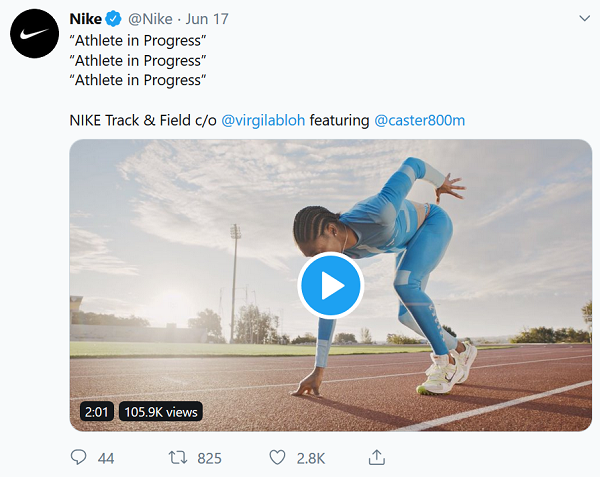
Those viewers might become interested in buying Nike’s products soon.
We spend time on Facebook, LinkedIn, Twitter, and LinkedIn almost every day. Yes, we use these platforms here at OmniKick to generate awareness for our service.
What can you do to compete on all these platforms without spreading yourself too thin?
Invest in content marketing. For example, Super Dispatch is a platform that makes it faster for carriers, brokers, and shippers to move cars. They publish content on various social channels on a regular basis.
These platforms want content. I’m talking about high-quality content that makess prospects engage with your brand.
Ahrefs rank for lots of keywords related to their business on Google organic search engine. Their blog traffic grew exponentially over the last four years. That enabled them to beat out most of their competitors.

I come across Ahrefs a lot on Twitter and Medium. By publishing exceptional content, Ahrefs can compete on various awareness platforms at the same time.
Content marketing helped increase awareness for their service. As a result, their annual recurring revenue (ARR) has grown over the past years too.
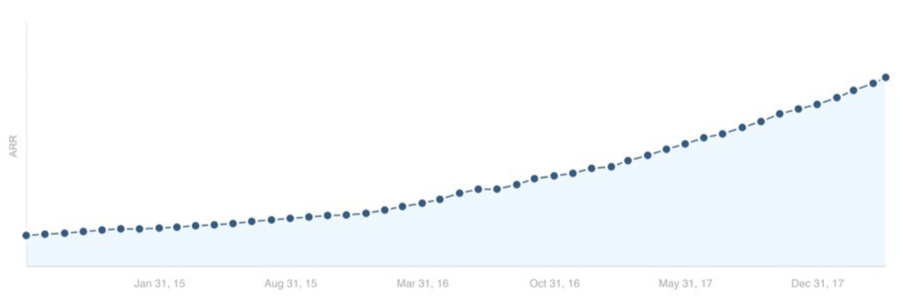
Content marketing lets you compete everywhere. Post the same video on YouTube, Facebook, and your blog.
Post excerpts of your article on LinkedIn, Twitter, and Instagram. Reuse one content over and over again. For example, respected Maryland car accident attorney, Nicholas Parr maintains an active presence on major social platforms like Twitter, Facebook, and Instagram.
Content marketing let you fill the top of your sales funnel with lots of prospects.
Spend most of your time in the awareness stage
Think about it. The awareness stage is the first stage in the sales funnel.
If you don’t get enough people into this first stage, it would be difficult to get enough prospects to move to other stages of your sales funnel.
So, you need to spend most of your time investing in this first stage.
For example, Gary Vaynerchuk, CEO of Vayner Media, publishes a lot of content on LinkedIn several times daily. There’s no doubt that his team invests a lot of time and resources on the platform.
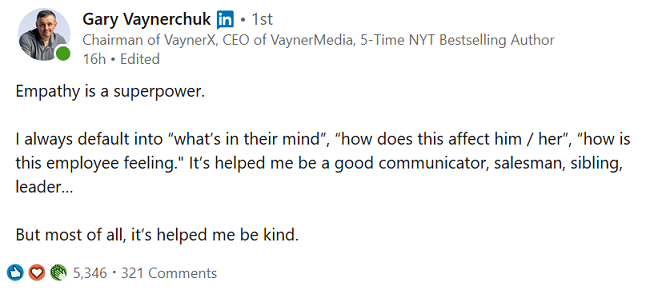
When your prospects see interesting content from you frequently, they like you more.
For instance, if LinkedIn is the channel your customers spend most of their time, get on LinkedIn. Engage with people on the platform. Share interesting updates LinkedIn users want to read.
The more interesting content you share, the more LinkedIn users would learn about your business. That’s awareness. That’s the top of the funnel.
LinkedIn is just an example. There are other awareness platforms too. Get on them and spend enough time to get people’s attention.
Build landing pages to generate leads
Prospects could just put your website address into the browser and land on your home page. Visitors from search engines could also choose to go to your home page.
But, if you’re building a sales funnel, where you want to track everything and measure specific metrics that tell you how well you’re doing, you need landing pages.
I’m a big fan of landing pages. With so many incredible tools available today, it’s easy for anyone to build a landing page. You don’t have to be a website developer to create one.
When you’re building a sales funnel, you’re always trying new things. Landing pages give you a lot of freedom to do things you can’t do on your home page.
For example, you may offer a free e-book on your landing page in order to get prospects to give you their email address. That’s something you may not want to do that on your home page.
For example, Shopify creates a landing for each of its free course.
Below is a screenshot of a course by Shopify titled “Facebook Ads for Beginners: Retention and Loyalty.” This course has its own landing page, and you must sign up with your email before you can have access to it.
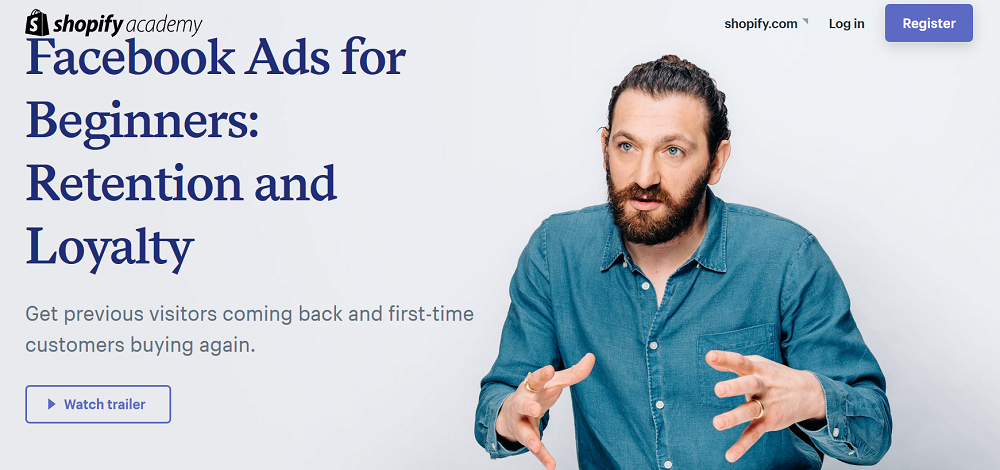
A visitor becomes a lead after registering for this course.
You may also create an interesting video to promote a specific feature of your product. You may not be able to do that on your home page. But with landing pages, you can do that.
You can try different mouth-watering offers to see which one lures people into the second stage of your sales funnel. It’s nearly impossible to build a better sales funnel without landing pages.
After getting prospects into the awareness stage, you need them to move to the second stage of the funnel, which is the interest phase.
It’s hard to get people to buy your product when they haven’t shown strong interest in it. You can build strong interest in your products or services on your landing pages.
The goal of your landing page is to collect prospects’ email addresses.
Offer visitors something interesting they wouldn’t want to miss and ask them to give you their email addresses so you can send it to them.
Use a powerful lead generating tool like OmniKick on your landing pages. OmniKick helps you create highly converting forms.
When visitors give you their email addresses, they become leads. Now, they are in the second phase of your sales funnel. When you have their emails, you can make them see the reason why they need your product or service. You can also show them why you’re better than the competition.
It’s inside email you make them move to the next stages of the funnel. Don’t worry. I’ll tell you how to do that.
Big Sun Solar sells solar panels that lowers energy bills. When you visit their landing page, they ask for your details which lets them contact you later.
Drive traffic to your landing pages
Without traffic, your landing pages are useless. You need to drive traffic to your landing pages before you can get emails.
How do you drive traffic to your landing pages?
There’re a lot of ways to drive traffic on the web. But I’ll tell you a few very quickly in this article.
My number one way of driving traffic to a landing page is through internal linking. Internal linking means creating a link to your landing page in one of your blog posts.
This method will only work for you if you create lots of blog posts per week or month. Don’t bother using this method if you only publish a blog post occasionally.
For example, HubSpot publishes a lot of posts per week. And they also have lots of landing pages. They link to their landing pages in all their blog posts. They even put a banner on a blog post that addresses a topic related to the landing page.
The below screenshot was taken on a blog post about how to create a sales plan. HubSpot has a banner that links to a landing page to download a sales plan template.
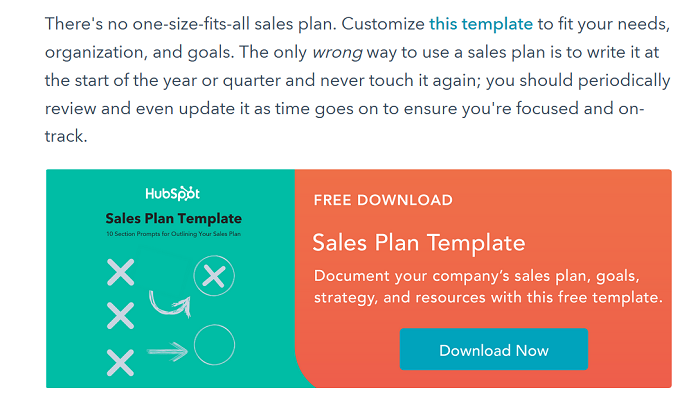
My number two way of driving traffic to a landing is through YouTube videos. If you publish videos regularly and you’ve got a decent number of subscribers, you can include a link to your landing page in the description of a relevant video.
The more views your YouTube videos get, the more the prospects that will see your link in the description and click it.
For example, Billy Wilson created a video on how to create Facebook ads. Inside the description of the video, he added a link to a landing where visitors can drop their emails to access his free Facebook ads agency training.
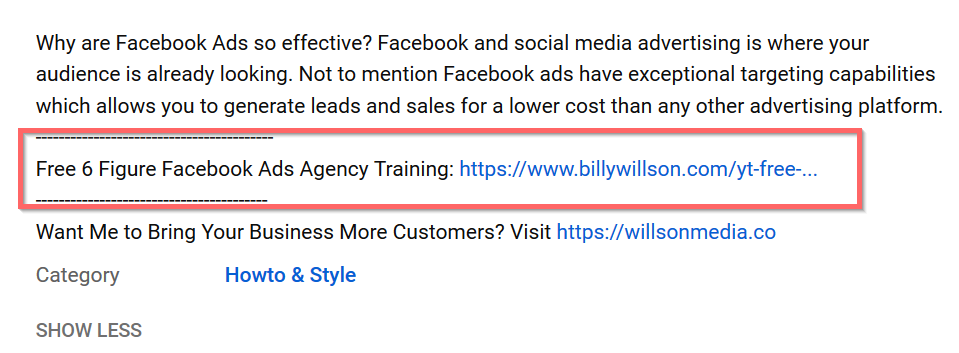
My number three way is to include a link to the landing page on my social media profile.
For example, if you’re active on Twitter, a lot of people will visit your profile. You can include a link to your landing page on your Twitter profile. Prospects who visit your profile may click on the link.
Advertising is another way to drive traffic to your landing pages.
Platforms like Google, Facebook, Instagram, Twitter, and LinkedIn allow you to advertise to their users. You can create ads that target your prospects and ask them to visit the landing page.
LinkedIn is the ideal platform for companies that sell to businesses. For example, Shoeboxed helps freelancers, startups and businesses physical receipts into data. They scan and organize receipts and help you create expenses reports and more. Lots of their customers are on LinkedIn.
Once they’re there, offer them something they can’t resist in exchange for their emails. If your offer is truly valuable, prospects won’t hesitate to give you their email addresses.
Send a welcome email series
I like companies that send me a welcome email series when I join their email list.
A welcome email series give me the chance to learn more about the company, the people behind it, and what they do.
It makes the whole experience much more human.
You should give your subscribers the opportunity to learn more about your company. And you should also be open to learning about your subscribers too. Ask them to email you and ask any questions they may have which you can help answer.
Give subscribers the offer you promised when they signed up.
For example, Pipedrive sends you a welcome email message after signing up for a free trial.
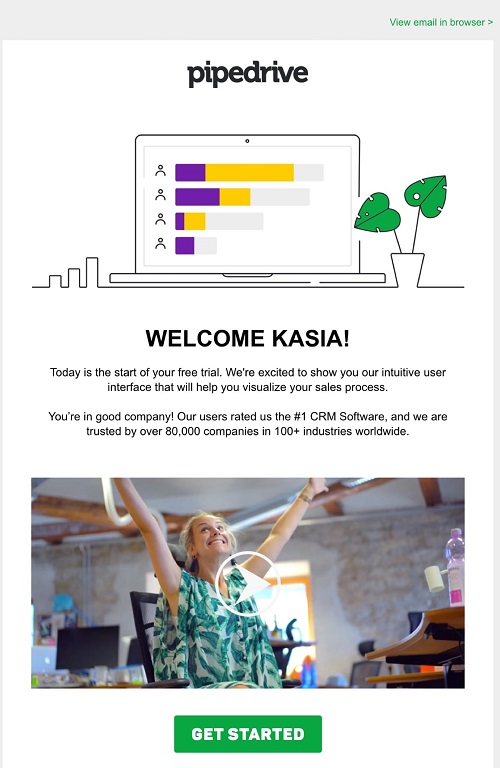
The open rates for welcome emails are 69% higher than “business as usual” emails according to a study.
I can’t count how many times I’ve received the sign-up offer, only for the company to email me 3 weeks later, introducing me to their new product. That’s not the right way to market online.
The first email you send to subscribers after signing up should be a welcome email. Ensure that you also give them the offer you promised in this first email.
You may even tell them when to expect the next email. If subscribers are already expecting your second email, it means you’re winning their attention. Web users receive a lot of emails per day.
If your second email makes them curious and wantss to learn more about your company, product, service, or anything that helps them, they’ll expect your third email.
Your welcome email series could be spread over 14 days, and they could be five emails in total. Each email you send should take the prospect to the next stage of your sales funnel.
The more complex and expensive your product or service is, the more emails should be in the welcome series. The purpose of sending a welcome emails series is to build up a strong interest in your products or services.
Use email automation
Using email automation will make your sales funnel 100% more effective.
It’s possible that some of your subscribers won’t read all the emails in your welcome series.
Let’s say that you have 10 emails spread over 3 weeks in your email series. Some subscribers may not read email 3, 4, and 5.
For these subscribers, they may not understand email 6 when they open it. That’s because they’ve missed some emails in the series.
So, with email automation, you know when someone misses an email in the series. Instead of sending them the next email and hoping they buy, you can send a different email (or email series), that shows clearly that they missed an email.
Email automation also lets you recognize paying and non-paying customers.
Send an email to a prospect who failed to pay for your service after the end of their free trial. Send them a survey or ask why they chose not to pay to continue using your service.
BigCommerce does this. They send emails to customers who didn’t renew after completing their free trial.
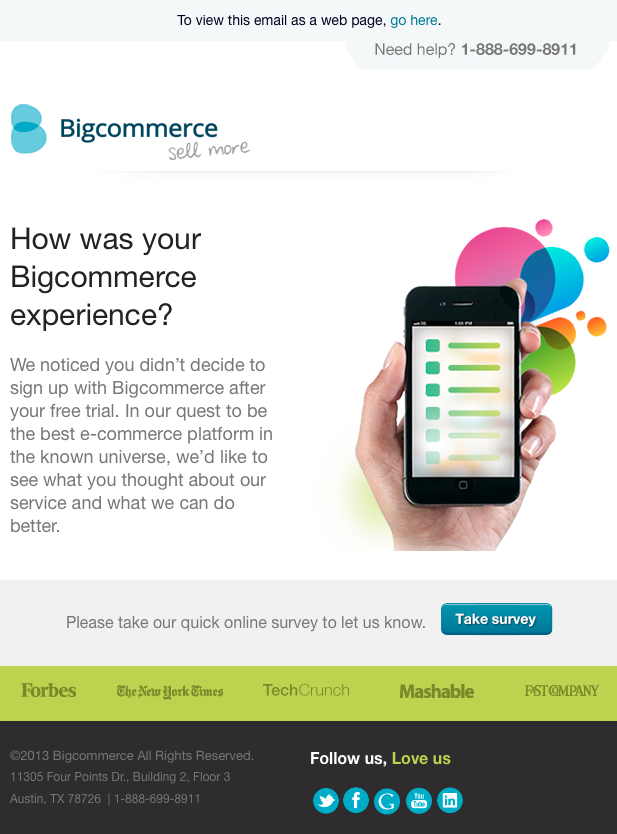
With email automation, you can create series and sub-series and even more sub-series based on specific actions or events.
If a subscriber opens your emails and clicks on some links, that’s a strong sign of buying interest. A subscriber who doesn’t open your emails is probably not ready to buy.
Email automation enables you to focus on converting subscribers with strong buying interest.
It also lets you recognize those subscribers who aren’t showing much interest. Take these subscribers’ emails and retarget them on platforms like Facebook and Google. You can also send them interesting emails to reignite their interest again.
Always track and improve your unique open and click rates
Unique open rate is the percentage of people that opened your email message. For example, if you send an email message to 1,000 subscribers, and 100 opened it, that means you have a unique open rate of 10%.
Click rate is the percentage of people that clicked on links in your email message. For example, if you send an email message to 1,000 subscribers, and 50 people clicked on a link in the message, it means you have a click rate of 5%.
Track and improve your unique open and click rates always. Doing that helps you improve the results you get from your sales funnel.
Don’t just create a message in your email welcome series and leave it. Test that message against other variations. Test the subject line, the email copy, the call-to-action button, the format, etc. Test everything.
I recommend a/b testing each message in the series. Testing a single email message in the series could increase your sales.
You can increase your sales from 100 per day to 200 by a/b testing an email message in your campaign. A/B testing makes your sales funnel work harder for your business.
Conclusion
Yes, it’s possible to double or even triple your revenue within a short period of time when you build a better sales funnel. In this article, I’ve laid out all the key things you need to know to build a powerful sales funnel that will grow your business.
In the comment section below, tell me the mistakes you’ve made trying to build a sales funnel? And if you haven’t built a sales funnel before, tell me how you intend to use it to increase your sales.
Thanks for reading. Please, share this article with your friends on social media.
